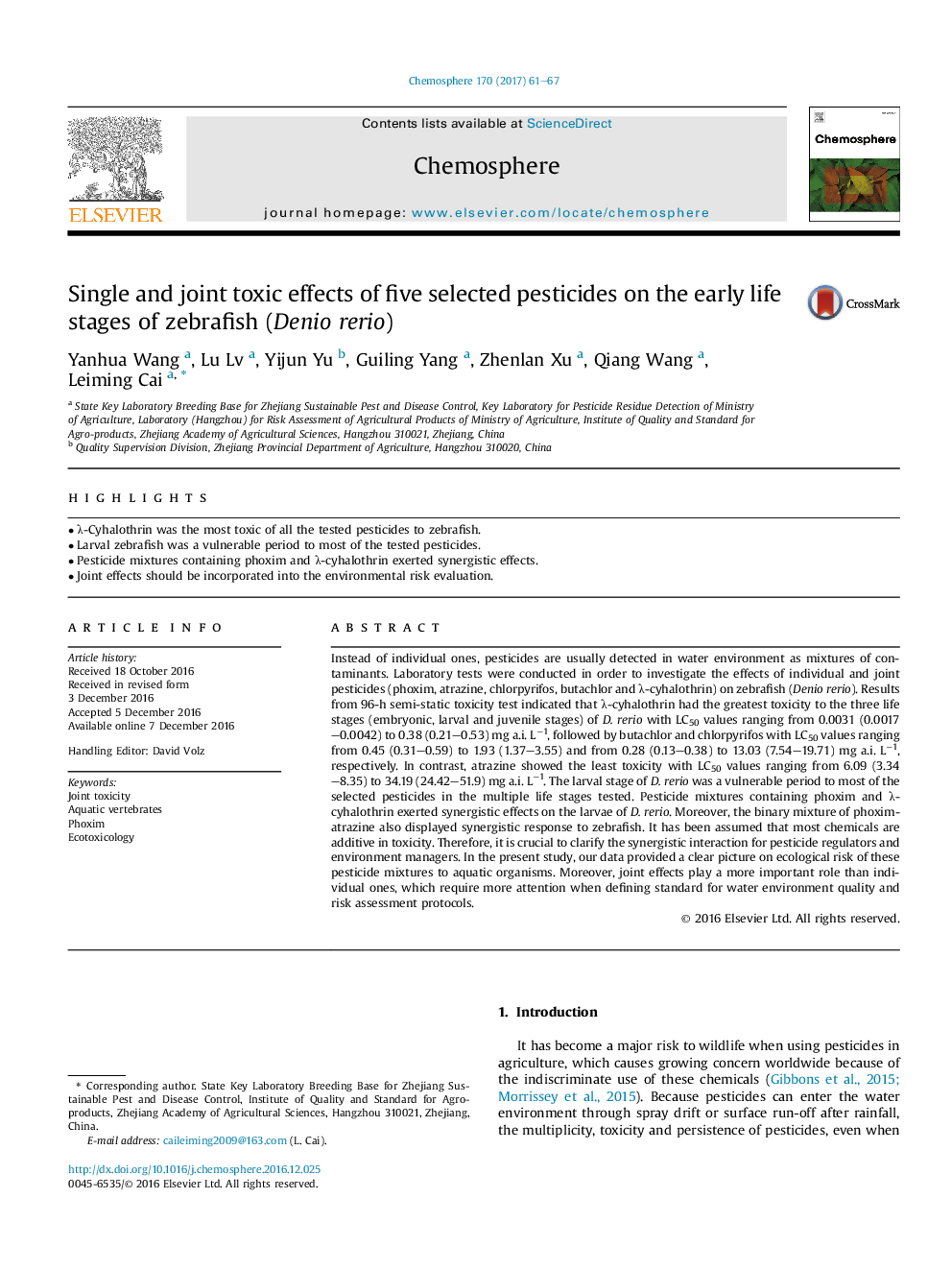| Article ID | Journal | Published Year | Pages | File Type |
|---|---|---|---|---|
| 5746805 | Chemosphere | 2017 | 7 Pages |
â¢Î»-Cyhalothrin was the most toxic of all the tested pesticides to zebrafish.â¢Larval zebrafish was a vulnerable period to most of the tested pesticides.â¢Pesticide mixtures containing phoxim and λ-cyhalothrin exerted synergistic effects.â¢Joint effects should be incorporated into the environmental risk evaluation.
Instead of individual ones, pesticides are usually detected in water environment as mixtures of contaminants. Laboratory tests were conducted in order to investigate the effects of individual and joint pesticides (phoxim, atrazine, chlorpyrifos, butachlor and λ-cyhalothrin) on zebrafish (Denio rerio). Results from 96-h semi-static toxicity test indicated that λ-cyhalothrin had the greatest toxicity to the three life stages (embryonic, larval and juvenile stages) of D. rerio with LC50 values ranging from 0.0031 (0.0017-0.0042) to 0.38 (0.21-0.53) mg a.i. Lâ1, followed by butachlor and chlorpyrifos with LC50 values ranging from 0.45 (0.31-0.59) to 1.93 (1.37-3.55) and from 0.28 (0.13-0.38) to 13.03 (7.54-19.71) mg a.i. Lâ1, respectively. In contrast, atrazine showed the least toxicity with LC50 values ranging from 6.09 (3.34-8.35) to 34.19 (24.42-51.9) mg a.i. Lâ1. The larval stage of D. rerio was a vulnerable period to most of the selected pesticides in the multiple life stages tested. Pesticide mixtures containing phoxim and λ-cyhalothrin exerted synergistic effects on the larvae of D. rerio. Moreover, the binary mixture of phoxim-atrazine also displayed synergistic response to zebrafish. It has been assumed that most chemicals are additive in toxicity. Therefore, it is crucial to clarify the synergistic interaction for pesticide regulators and environment managers. In the present study, our data provided a clear picture on ecological risk of these pesticide mixtures to aquatic organisms. Moreover, joint effects play a more important role than individual ones, which require more attention when defining standard for water environment quality and risk assessment protocols.
